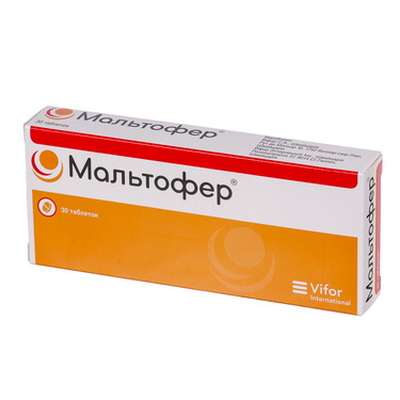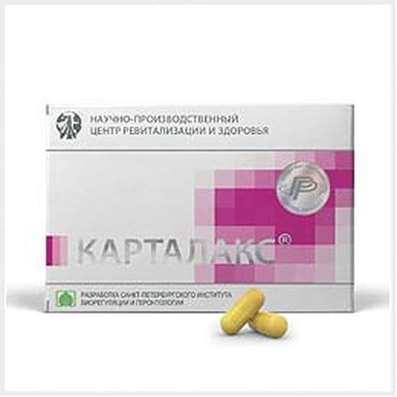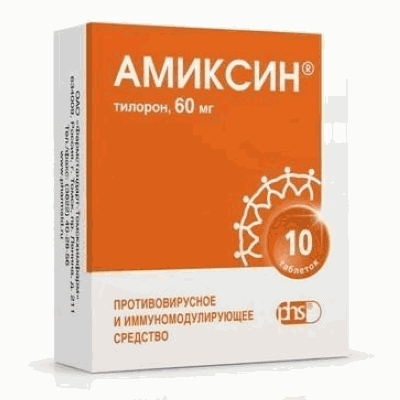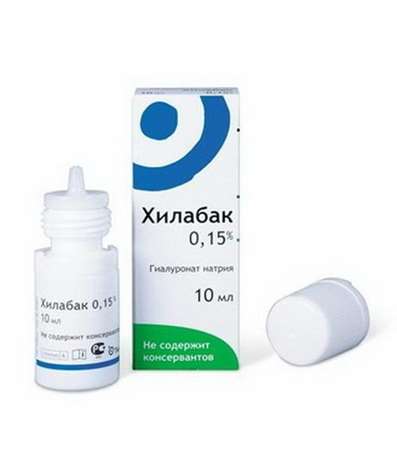Instruction for use: Fluoxetine 20mg
I want this, give me price
International Nonproprietary Name (INN): Fluoxetine
Pharmaceutic group: Antidepressants
Presentation:
apsules 10 mg ¹20;
Capsules 20 mg ¹20.
Available with prescription
Indications for Fluoxetine
Fluoxetine is an antidepressant of the selective serotonin reuptake inhibitor (SSRI) class. Fluoxetine was first documented in 1974 by scientists from Eli Lilly and Company. It was presented to the U.S. Food and Drug Administration in February 1977, with Eli Lilly receiving final approval to market the drug in December 1987. Fluoxetine went off-patent in August 2001.
Fluoxetine is approved for the treatment of major depression (including pediatric depression), obsessive-compulsive disorder (in both adult and pediatric populations), bulimia nervosa, panic disorder and premenstrual dysphoric disorder. In combination with olanzapine it is known as Symbyax.
Despite the availability of newer agents, fluoxetine remains extremely popular. In 2010, over 24.4 million prescriptions for generic formulations of fluoxetine were filled in the United States alone, making it the third most prescribed antidepressant after sertraline (SSRI; became generic in 2006) and citalopram (SSRI; became generic in 2003).
MEDICAL USES. Fluoxetine is frequently used to treat major depression, obsessive compulsive disorder, bulimia nervosa, panic disorder, body dysmorphic disorder and premenstrual dysphoric disorder. Caution should be taken when using any SSRI for bipolar disorder as this can increase the likelihood of mania; however, fluoxetine can be used with an antipsychotic (such as Quetiapine) for bipolar. It has also been used for cataplexy, obesity, and alcohol dependence, as well as binge eating disorder.
Treatment with fluoxetine should be always controlled by the doctor, who has prescribed the therapy. The medicine is produced in the form of hard gelatin capsules, containing 10 mg or 20 mg of fluoxetine.
DOSING: Depression in adults is treated with 20-80 mg of fluoxetine daily. The recommended dose for treating depression in children is 10-20 mg daily. After 13 weeks of daily administration, once weekly dosing may be effective in some patients.
Bulimia is treated with 60 mg of fluoxetine daily. Long-term treatment for up to 52 weeks has been shown to be beneficial in maintaining remission.
Obsessive-compulsive disorder in adults and children is treated with 20-60 mg daily and panic disorder is managed with 10-60 mg daily. The recommended regimen for PMDD is 20 mg administered every day of the menstrual cycle or daily for 14 days prior to the onset of menstruation through the first day of menses.
The recommended treatment for resistant depressionis 20-50 mg of fluoxetine and 5-20 mg olanzapine once daily in the evening while the recommended treatment for depression associated with bipolar disorder is 20-50 mg fluoxetine and 5-12.5 mg olanzapine once daily in the evening.
DRUG INTERACTIONS: Fluoxetine should not be taken with any of the monoamine oxidase inhibitor (MAOI) class of antidepressants [for example, isocarboxazid (Marplan), phenelzine (Nardil), tranylcypromine (Parnate), selegiline (Eldepryl), and procarbazine (Matulane)] or other drugs that inhibit monoamine oxidase [for example, linezolid (Zyvox)]. Such combinations may lead to confusion, high blood pressure, tremor, hyperactivity, coma, and death. Fluoxetine should not be administered for at least 14 days after stopping MAOIs. Because fluoxetine is active in the body for several weeks, MAOIs should not be administered for at least 5 weeks after fluoxetine has been stopped. Similar reactions occur when fluoxetine is combined with other drugs, for example, tryptophan, St. John's wort, meperidine (Demerol), and tramadol (Ultram) that increase serotonin in the brain.
Trade name of the drug – Fluoxetine
Dosage Form: capsules
Active substance:
11.2 mg of fluoxetine hydrochloride equivalent to 10 mg of fluoxetine;
fluoxetine hydrochloride 22.4 mg, equivalent to 20 mg of fluoxetine;
Excipients: lactose monohydrate (milk sugar) 30.8 mg / 61.6 mg microcrystalline cellulose 16.1 mg / 32.2 mg, colloidal silicon dioxide (Aerosil) 0.15 mg / 0.30 mg of magnesium stearate 0 6 mg / 1.2 mg, talc 1.15 mg / 2.30 mg;
capsule composition at a dosage of 10 mg Gelatin 36.44 mg titanium dioxide 1.52 mg, 0.04 mg indigo carmine;
composition capsules at a dose of 20 mg: 36.44 mg of gelatin, titanium dioxide, 1.52 mg, 0.03 mg azorubin dye, dye ponceau (Ponceau 4R) 0,01 mg blue dye and 0.05 mg patented dye Brilliant Black 0 , 06 mg.
Description:
Hard gelatine capsules. For the 10 mg dosage: white with the housing cap and blue; for dosing of 20 mg: a white body and blue cap. The contents of capsules - powder white or nearly white.
Pharmacotherapeutic group: Antidepressants
ATX code: N06AB03
Pharmacological Properties of Fluoxetine
Antidepressant group of selective serotonin reuptake inhibitors. Has Timo-analeptic and stimulating effect.
Pharmacodynamics
Selectively blocking reverse neuronal uptake of serotonin (5HT) in the synapses of neurons of the central nervous system. Inhibition of reuptake of serotonin leads to increasing the concentration of the neurotransmitter in the synaptic cleft, and amplifies its effect on ppolongiruet postsinapticheskie petseptopnye portions. By increasing serotonergic transmission, according to the mechanism of negative membrane due fluoxetine inhibits neurotransmitter exchange. With prolonged use of fluoxetine inhibits the activity of 5-HT1 receptors. It has little effect on the reuptake of noradrenaline and dopamine. It has no direct effect on serotonin, m-cholinergic, H1-histamine and alpha-adrenergic receptors. Unlike most antidepressants causes decreased activity postsynaptic adrenergic beta.
Effective with endogenous depression and obsessive-compulsive disorders. Has anorectic action, can cause weight loss. It does not cause orthostatic hypotension, sedation, nekardiotoksichen. Persistent clinical effect occurs within 1 - 2 weeks of treatment.
Pharmacokinetics
When administered drug is well absorbed from the gastrointestinal tract kishechnoro (up to 95% of the dose), the use of food slows the absorption of fluoxetine significantly. Peak plasma concentrations are reached in 6-8 hours. The bioavailability after oral administration of fluoxetine is more than 60%. The drug was well accumulates in tissues readily penetrates the blood-brain barrier, binding to plasma proteins is above 90%. It is metabolized in the liver to aktivnoro pytem demethylation metabolite norfluoxetine and a number of unidentified metabolites. Excreted by the kidneys as metabolites (80%) and gut (15%), mainly in the form of glucuronides. Fluoxetine half-life after reaching equilibrium concentration in plasma is about 4 - 6 days. The half-life of the active metabolite, norfluoxetine with single dose and after reaching equilibrium concentration in plasma is between 4 and 16 days. In patients with hepatic failure half-lives of fluoxetine and norfluoxetine is prolonged.
Indications for Fluoxetine
Depression different genesis.
Obsessive-Compulsive Disorder
Bulimic neurosis.
Hypersensitivity to the drug.
Simultaneous treatment with MAO inhibitors of monoamine oxidase (and within 14 days after their cancellation)
Simultaneous treatment with thioridazine (and for 5 weeks after discontinuation of fluoxetine), pimozide.
Pregnancy.
The period of breastfeeding.
Severe renal impairment (creatinine clearance less than 10 ml / min).
Liver failure.
Lactase deficiency, lactose intolerance, glucose-galactose malabsorption.
Age up to 18 years.
Precautions:
Suicide risk: in depression there is a possibility of suicide attempts, which may persist until the onset of stable remission. Isolated cases of suicidal ideation and suicidal behavior are described on therapy or shortly after its completion, similar to the action of other drugs close pharmacological action (antidepressants). Careful monitoring of patients at risk. Physicians should convince patients to immediately report any thoughts and feelings that cause anxiety.
Seizures: Fluoxetine should be used with caution in patients who have observed seizures.
Hyponatremia: there have been cases of hyponatremia. Basically similar cases occurred in elderly patients and in patients taking diuretics, due to a decrease in circulating blood volume.
Diabetes: glycemic control in patients with diabetes, treatment with fluoxetine showed time hypoglycaemia after discontinuation of the drug developed hyperglycemia. At the beginning or after treatment with fluoxetine may require an adjustment of insulin doses and / or hypoglycemic agents for oral administration.
Renal / hepatic failure: fluoxetine is metabolized in liver and excreted through kidney and the gastrointestinal tract. Patients with severe liver function impairment is recommended to prescribe a lower dose of fluoxetine or prescribed the drug every other day. When fluoxetine 20 mg / day for two months found no difference concentrations of fluoxetine and norfluoxetine in plasma of healthy individuals with normal renal function and patients with severe renal impairment (creatinine clearance 10 mL / min), in need of hemodialysis.
Fluoxetine Dosage and Administration
The drug is taken orally, at any time, regardless of the meal.
the doldrums
The initial dose is 20 mg 1 time per day in the first half of the day, regardless of the meal. If necessary, the dose may be increased to 40-60 mg / day, divided into 2-3 hours (20 mg / weekly). The maximum daily dose - 80 mg 2 - 3 admission.
The clinical effect develops within 1 - 2 weeks after initiation of treatment, some patients it may be achieved later.
Obsessive-compulsive disorder:
The recommended dose is 20-60 mg per day.
bulimic neurosis
The drug is administered in a daily dose of 60 mg, divided into 2-3 receptions.
Use of the drug by patients of various ages
There is no data on the variation of doses depending on the age. Starting treatment of elderly patients with a dose should be 20 mg / day.
Accompanying illnesses
Assign fluoxetine in patients with impaired hepatic or renal function is recommended with the use of low-dose and lengthening the interval between techniques (see. "Precautions" section).
Side effect ofFluoxetine
When fluoxetine, as in cases of drugs of selective serotonin reuptake inhibitors, are the following undesirable effects.
Cardio-vascular system
Frequently (≥ 1% - ≤10%): atrial flutter, hot flashes ( "hot flushes" the heat).
Uncommon (≥ 0,1% - ≤1%): hypotension.
Rarely (≤ 0,1%): Vasculitis, vasodilatation.
From the digestive system
Very often '(≥ 10%), diarrhea, nausea.
Frequently (≥ 1% - ≤10%): dry mouth, dyspepsia, vomiting.
Uncommon (≥ 0,1% - ≤1%): dysphagia, taste perversion.
Rarely (≤ 0,1%): Pain along the esophagus.
On the part of the hepatobiliary system
Rarely (≤ 0,1%): idiosyncratic hepatitis.
Immune system:
Very rarely (≤ 0,1%): anaphylaxis, serum sickness.
Disorders of metabolism and nutrition
Frequently (≥ 1% - ≤10%): anorexia (including weight loss).
On the part of the musculoskeletal system
Uncommon (≥ 0,1% - ≤1%): muscle twitching.
CNS
Very often '(≥ 10%): Headache.
Frequently (≥ 1% - ≤10%): impaired attention, dizziness, lethargy, drowsiness (including hypersomnia, sedation), tremor.
Uncommon (≥ 0,1% - ≤1%): agitation, hyperactivity, ataxia, loss of coordination, bruxism, dyskinesia, myoclonus.
Rarely (≤ 0,1%): Bucco-glossalny syndrome, convulsions, serotonin syndrome.
Mental disorders
Very often '(≥ 10%): insomnia (including early morning awakening, primary and secondary insomnia).
Frequently (≥ 1% - ≤10%): abnormal dreams (including nightmares), nervousness, tension, decreased libido (including lack of libido), euphoria, sleep disorder.
Uncommon (≥ 0,1% - ≤1%): depersonalization, hyperthymia, orgasm disturbance (including anorgasmia), thought disorder.
Rarely (≤ 0,1%): manic disorder.
For the skin
Frequently (≥ 1% - ≤10%): rash, pruritus, polymorphous skin rash, urticaria.
Uncommon (≥ 0,1% - ≤1%): ecchymosis, susceptibility to bruising, alopecia, cold sweat.
Rarely (≤ 0,1%): angioedema, photosensitivity reaction.
From the senses
Frequently (≥ 1% - ≤10%): blurred vision.
Uncommon (≥ 0,1% - ≤1%): mydriasis.
With the genitourinary system
Frequently (≥ 1% - ≤10%): frequent urination (including pollakiuria), ejaculation disorder (including lack of ejaculation, dysfunctional ejaculation, early ejaculation, delayed ejaculation, retrograde ejaculation), erectile dysfunction, gynecological bleeding (including bleeding cervical, dysfunctional uterine bleeding, bleeding from the genital tract, menometrorrhagia, menorrhagia, metrorrhagia, polimenoreya bleeding in post-menopause, uterine bleeding, vaginal bleeding).
Uncommon (≥ 0,1% - ≤1%): dysuria.
Rarely (≤ 0,1%): sexual dysfunction, priapism.
post-marketing reports
On the part of the endocrine system have been cases of antidiuretic hormone deficiency.
These side effects often occur at the beginning or fluoxetine with increasing dose.
overdose
Symptoms: agitation, seizures, drowsiness, cardiac arrhythmia, tachycardia, nausea, vomiting.
Other serious symptoms of fluoxetine overdose (as in isolated fluoxetine, and at the same time taking other drugs) included coma, delirium, QT-interval prolongation and ventricular tachyarrhythmias, including flicker - ventricular flutter and heart failure, decreased blood pressure, fainting, mania, pyrexia, stupor, and a state similar to neuroleptic malignant syndrome.
Treatment: specific antagonists to fluoxetine were found. Symptomatic therapy, gastric lavage with the appointment of activated charcoal, in convulsions - diazepam, maintenance of respiration, cardiac activity, body temperature.
Interaction
Fluoxetine and its major metabolite norfluoxetine have a long half-life, it is necessary to take into account the combination of fluoxetine with other drugs, as well as its replacement with another antidepressant.
It is impossible to apply the drug simultaneously with inhibitors of monoamine oxidase (MAO), including antidepressants - MAO inhibitors; furazolidone, procarbazine, selegiline, and tryptophan (a precursor of serotonin), as may develop serotonin syndrome, which manifests itself in confusion, hypomania, agitation, convulsions, dysarthria, hypertensive crises, chills, tremor, nausea, vomiting, diarrhea.
After application of MAO appointment fluoxetine inhibitors may be no earlier than 14 days. Do not use MAO inhibitors earlier than 5 weeks after discontinuation of fluoxetine.
Simultaneous treatment with drugs metabolized with the participation of isoenzyme CYP2D6 (carbamazepine, diazepam, propafenone) with fluoxetine should be carried out with the minimum therapeutic dose. Fluoxetine blocks metabolism of tricyclic and tetracyclic aitidepressivnyh means trazodone, metoprolol, terfenadine, which increases their concentration in the serum, amplifying their effects and increasing the incidence of complications.
Patients consistently taking maintenance doses of phenytoin, the concentration of phenytoin in plasma significantly increased, and there were signs fenitoinovoy toxicity (nystagmus, diplopia, ataxia and CNS depression) after the beginning of the concomitant treatment with fluoxetine.
Combined use of fluoxetine and lithium salts requires close monitoring of the concentration of lithium in the blood, because perhaps it increase.
Fluoxetine increases the effects of hypoglycemic agents.
In an application with drugs, possessing a high degree of protein binding, especially with anticoagulants and digitoxin, may increase the plasma concentration of free (unbound) medicines and an increased risk of adverse effects.
special instructions for Fluoxetine
Careful monitoring of patients with suicidal tendencies, especially at the beginning of treatment. The highest risk of suicide in patients previously treated with other antidepressants, and of patients who during treatment with fluoxetine noted excessive fatigue, restlessness or hypersomnia. Prior to the significant improvement in the treatment of such patients should be under a doctor's supervision.
In children, adolescents and young adults (under 24 years) with depression and other mental disorders antidepressants compared to placebo, increased the risk of suicidal thoughts or suicidal behavior. Therefore, the appointment of fluoxetine or any other. Antidepressants in children, adolescents and young adults (under 24 years) should be related to the risk of suicide and the benefits from their use. In short-term studies in people older than 24 years, the risk of suicide did not increase, and in people over 65 years is somewhat reduced. Any depressive disorder in itself increases the risk of suicide. Therefore, during antidepressant treatment all patients should be monitored for early detection of infringements or behavior changes, and suicidal tendencies.
Against the background of electroconvulsive therapy may develop prolonged seizures.
The interval between the end of therapy, monoamine oxidase inhibitors (MAOIs) and initiation of treatment with fluoxetine should be at least 14 days; between the end and the beginning of treatment with fluoxetine therapy MAO inhibitors - at least 5 weeks.
After discontinuation of its therapeutic serum concentrations may persist for several weeks.
Patients with diabetes may develop hypoglycemia during therapy with fluoxetine and hyperglycaemia after its cancellation. At the beginning or after treatment with fluoxetine may require an adjustment of insulin doses and / or hypoglycemic agents for oral administration.
In the treatment of patients with deficiency of body weight should be considered anorectic effects (possible progressive loss of body weight).
During fluoxetine should refrain from drinking alcohol, because the drug increases the effects of alcohol.
Effects on ability to drive and use machines
Admission fluoxetine may adversely affect the performance of work requiring a high rate of mental and physical reactions (drive motor vehicles, machinery, working at heights, etc.).
Release form of Fluoxetine
Capsules of 10 mg and 20 mg. 10 capsules in packings Valium planimetric. 1, 2, 3, 4 or 5 packages of cellular contour together with instructions for use placed in a pile of cardboard.
Storage conditions of Fluoxetine
In a dry, dark place at a temperature no higher than 25 ° C.
Keep out of the reach of children.
Shelf life of Fluoxetine
3 years.
Do not use beyond the expiration date printed on the package.
Conditions of supply of Fluoxetine from pharmacies
With prescription.

 Cart
Cart





